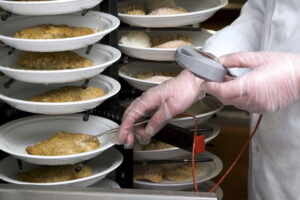One cross-contaminated plate, one mislabeled dish, and suddenly, your restaurant is making headlines for all the wrong reasons.
A thoughtful, allergy-friendly menu isn’t just good hospitality—it’s smart business. Guests with dietary restrictions? They bring friends, family, and loyal repeat business. They remember where they felt safe, where they didn’t have to play 20 questions with the server, and where they weren’t treated like a problem.
So, how do you create a menu that’s delicious, inclusive, and keeps everyone breathing easy? Let’s break it down.
Clear Labeling: Say It, Mean It, Stick to It
If a guest has to guess whether a dish is safe, you’ve already lost.
- Icons are your friend – A simple “GF” for gluten-free, “DF” for dairy-free, or a peanut symbol can make scanning the menu a breeze.
- But don’t rely on them alone – Include a separate allergen-friendly section or an easy-to-read key. Some guests need more details than a tiny symbol.
- Avoid misleading labels – “Gluten-friendly” isn’t the same as “gluten-free.” Be crystal clear about what you mean.
Cross-Contamination: The Silent Dealbreaker
It’s not just about what is in the food. It’s about where the food has been.
- Separate prep areas – A gluten-free bun doesn’t mean much if it’s toasted on the same surface as regular bread.
- Color-coded preparation tools – Use a specific color for allergen-free cutting boards and gloves, like purple.
- Dedicated fryers – Fries that share oil with breaded chicken? Not gluten-free. Make sure guests know what’s truly safe.
- Allergy training for staff – The front and back of house should all know the difference between an allergy and a preference.
Customization: Give Guests Options, Not Headaches
People with food allergies aren’t looking for a “special” meal. They just want to eat without worry.
- Build-your-own dishes – Bowls, salads, and customizable plates let guests control what’s on their plate.
- Easy substitutions – Offer dairy-free cheese, nut-free pesto, or gluten-free pasta without an attitude.
- Make modifications simple – If it takes five minutes to explain how to make a dish allergy-safe, it’s time to tweak the menu.
The Power of a Well-Trained Staff
Menus are great. But when a guest asks, “Is this safe?” the response matters more than anything printed on the page.
- Servers should know – No one wants to wait while their server “checks with the kitchen” five times.
- Confidence, not guesswork – “I think it’s okay” is never an answer. “I know for sure” is.
- Take it seriously – A rolled-eye response to a food allergy? That guest (and their entire group) won’t be back.
The restaurants that get this right build trust, loyalty, and an ever-growing customer base. Because when guests feel safe, they relax. They order more. They come back. And isn’t that the whole point?







